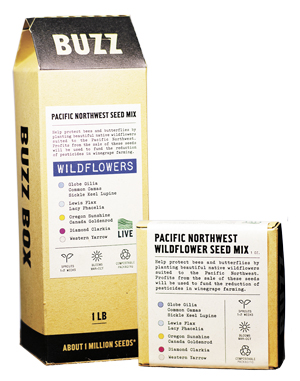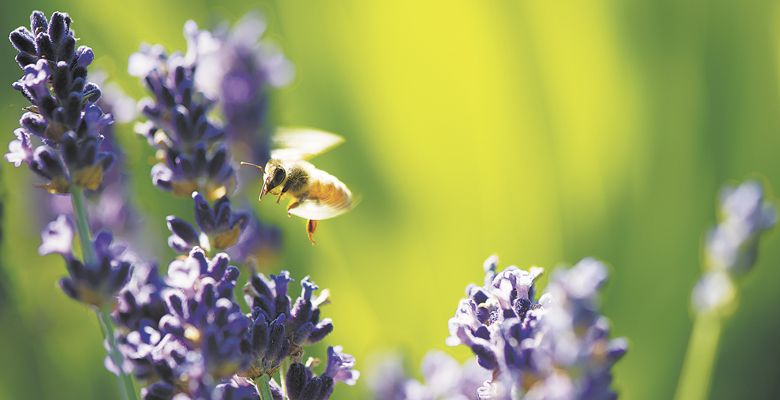LIVE All Abuzz
Annual meeting a hive of activity
In the shared interest of environmental sustainability, 165 members, representing Washington, Oregon and Idaho, gathered in April for the 2018 LIVE annual meeting. At the Chehalem Cultural Center in Newberg, a variety of topics were discussed: cover crops, fungicide resistance, differences between the maintenance of vineyard land and outlying areas, biodiversity, weed identification and more. In short, LIVE members demonstrated eagerness to elaborate on optimum farming and vineyard management methods, the nucleus of this successful organization the past two decades.
Now counting 337 vineyards and 42 wineries, LIVE continues growing. Oregon makes up the largest segment, with 304 vineyards and 35 wineries; Washington claims 29 vineyards and seven wineries, and Idaho, newest to the group, boasts two vineyards. Last year’s hiring of Brighid O’Keane as outreach director is strengthening LIVE interest in Washington and Idaho; as a result, their numbers are expected to increase.
Three awards were presented to members who showed outstanding strides for land stewardship. Dan Kent with Salmon-Safe presented the Hero of Salmon Award — a reclaimed Oregon highway sign appropriately shaped like the state fish — to Illahe Vineyards. Founder Lowell Ford accepted, announcing, “We celebrated this last night: We had salmon for dinner.”
Awards of Excellence in Sustainability honored Zak Laster, vineyard site manager for Advanced Vineyard Systems (AVS) in McMinnville, and Sadie Drury, general manager at North Slope Management in Walla Walla.
“We (AVS) really strive to do the right thing for the environment and pay attention to what we’re putting into the land and taking out of the land,” Laster said.
Leading a team farming 300 acres, Drury intends to increase biodiversity between rows from the undeveloped outlying areas of the vineyard, where native plant material is more apt to thrive.
Buzz Box
During the meeting, LIVE unveiled an exciting, innovative outreach that had the room abuzz. Slated to hit tasting rooms all over the Willamette Valley, Buzz Box was born from an idea originating in Norway. Ágnes Lyche Melvaer, landscape architect and former lead of the bee-focused environmental group ByBi, helped launch the world’s first “bee highway” in 2015.

ByBi created a user-friendly, web-based map of Oslo designating restaurant symbols for flowers and hotel signs for nesting places to help people picture their city’s landscape the way bees, butterflies and hummingbirds view it.
When Chris Serra, executive director for LIVE, read about ByBi’s concept, he felt the environmentally focused Willamette Valley was prime for such a project.
Mimi Casteel of Hope Well Vineyard and O’Keane pitched the idea to the Center for Community Innovation’s Share Tank program and were granted $3,875 to fund a network of wildflower patches. With this money, LIVE worked with Oregon State University to develop a native mix of wildflower seeds and partnered with two area designers to formulate eye-catching and practical packaging for the mix.
Graphic designers Gaby Tirta Jenkins of Mercy Corps and Bryan Zentz of Stumptown Coffee Roasters collaborated to design a 1-ounce box and 1-pound carton, respectively. Buzz Box packaging, including the plastic and label adhesive, is compostable and printed with soy-based ink. When stacked, the ounce boxes resemble a bee’s yellow and black pattern.
In keeping with the purpose of the grant, each LIVE member in the Willamette Valley will be given a pound of the wildflower mix to be sprinkled throughout their property as they see most effective. Outreach will include Washington and Southern Oregon, but the first phase will cover an area of 750 square miles in the Willamette Valley.
With a background in biological sciences, Casteel possesses considerable knowledge about bees and their significance to the human population.
“Most agricultural fruit crops must be pollinated and, commonly, by European honeybees. They have been in horrible decline for years due to a loss of habitat and their immune system has been depleted over time due to the use of fertilizers,” she explained.
She added that existing bee boxes and other food and shelter cannot maintain large enough quantities to sustain the population. Since grapevines are self-pollinating, acres of this agricultural crop in one area does not help the pollinators’ plight. Fortunately, vineyard owners in Oregon respect sustainability from every angle.
According to Casteel, it doesn’t take large swaths of land to support a flourishing bee environment. Strips of land, garden patches, edges of vineyards and ends of rows prove perfect for bees, moths and butterflies.
More specifically, Willamette Valley producers are hoping to support native pollinators like sweat bees and mason bees. These bees don’t possess the capacity to fly many miles looking for food and shelter. Their foraging radius is, instead, meters at a time. That’s where the community can help.
Soon, Willamette Valley tasting rooms will sell 1-ounce Buzz Boxes so guests can cultivate their own pollinator patch. The vision is a “bee corridor” or a series of stepping stones that allow a weak pollinator population the opportunity to thrive.
Serra says, “We can return bees back to the Willamette Valley. We must work to re-cultivate their habitat. I have a small patch in my yard and it attracts bees and butterflies like you wouldn’t believe. I’m pretty excited about it.”
For people who fear bees, Melvaer offers this insight, “Many people don’t know the difference between a bee and a wasp. The wasps are the ones to come after you, your jam and meat in the autumn, not the bees. Wasps are meat-eaters while bees are vegetarian and only interested in flowers. If a bee happens to land on you, stay calm, observe the bee and wish her good luck and a further pleasant flight.”











